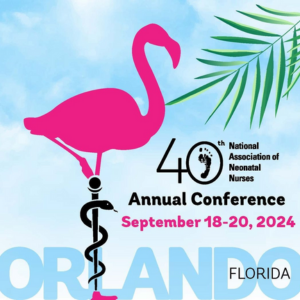Back
Concurrent Session
APRN
Understanding Newborn Toxicology: Matrices, Testing, and Other Considerations (208)
Thursday, September 19, 2024
3:30 PM – 4:30 PM EST
Location: Orange C
Earn 1 Contact Hour(s)
RNC-NIC: 1
NNP-BC: 1
RNC-LRN: 3
C-ELBW: 7
Pharmacology: 1
NNP-BC: 1
RNC-LRN: 3
C-ELBW: 7
Pharmacology: 1
Abstract Text:
Purpose: Provide an overview of neonatal toxicology testing, including collection and testing of various matrices, result interpretation, limitations, and current trends.
Background & Importance: In utero drug exposure is a significant public health threat to the well-being of the neonate, having both short-term and long-term impacts on the child’s growth and development. These exposure concerns stretch far beyond traditional drugs of misuse and can include dietary, over the counter, and prescription compounds. For more than 30 years, toxicological testing of newborn specimens has been performed to identify neonates born into at-risk environments. This information is used to determine medical treatments and intervention/resource options for the child and family. While each specimen holds unique advantages, collection and testing processes can vary greatly between hospitals and laboratories, and limiting which test options are available.
What Will Be Covered: This presentation will provide an overview of neonatal toxicology testing. Topics will include selection, collection, and testing of various matrices, such as urine, umbilical cord tissue, and meconium. Both testing considerations and result interpretation will be discussed. Current data trends and case report examples will also be provided.
Future Directions: Further studies are needed to better understand in utero drug exposure and its impacts on the neonate. The gathering of neonatal outcome data, including adverse events before or during delivery, neonatal toxicology results, and neonatal development indicators, should be collected to establish the significance of exposure events. Collaboration between medical professionals and toxicologists is crucial to achieving this goal.
Needs Assessment and Presentation Description: In utero drug exposure is a significant public health threat to the well-being of the neonate, with exposure stretching beyond traditional drugs of misuse. Studies on in utero exposure are also uncommon, making it difficult to interpret results and determine developmental implications for the neonate. To push the field forward, toxicologists and medical professionals need to collaborate. Thus, it is important for medical professionals to understand the current state of neonatal toxicology testing, including testable matrices, testing considerations, and result interpretations.
Purpose: Provide an overview of neonatal toxicology testing, including collection and testing of various matrices, result interpretation, limitations, and current trends.
Background & Importance: In utero drug exposure is a significant public health threat to the well-being of the neonate, having both short-term and long-term impacts on the child’s growth and development. These exposure concerns stretch far beyond traditional drugs of misuse and can include dietary, over the counter, and prescription compounds. For more than 30 years, toxicological testing of newborn specimens has been performed to identify neonates born into at-risk environments. This information is used to determine medical treatments and intervention/resource options for the child and family. While each specimen holds unique advantages, collection and testing processes can vary greatly between hospitals and laboratories, and limiting which test options are available.
What Will Be Covered: This presentation will provide an overview of neonatal toxicology testing. Topics will include selection, collection, and testing of various matrices, such as urine, umbilical cord tissue, and meconium. Both testing considerations and result interpretation will be discussed. Current data trends and case report examples will also be provided.
Future Directions: Further studies are needed to better understand in utero drug exposure and its impacts on the neonate. The gathering of neonatal outcome data, including adverse events before or during delivery, neonatal toxicology results, and neonatal development indicators, should be collected to establish the significance of exposure events. Collaboration between medical professionals and toxicologists is crucial to achieving this goal.
Needs Assessment and Presentation Description: In utero drug exposure is a significant public health threat to the well-being of the neonate, with exposure stretching beyond traditional drugs of misuse. Studies on in utero exposure are also uncommon, making it difficult to interpret results and determine developmental implications for the neonate. To push the field forward, toxicologists and medical professionals need to collaborate. Thus, it is important for medical professionals to understand the current state of neonatal toxicology testing, including testable matrices, testing considerations, and result interpretations.
Learning Outcome(s):
At the conclusion of this presentation, the learner will be able to:
- Explain why neonatal toxicology testing is needed and why test scopes go beyond traditional drugs of misuse.
- Discuss primary neonatal matrices available for testing, with focus on umbilical cord, meconium, and urine.
- Evaluate matrix selection and other test considerations that may impact a neonatal toxicology result.
- Review neonatal positivity specimen rates and case studies from a large commercial laboratory.


Barbara Terrell
Disclosure(s): No financial relationships to disclose

